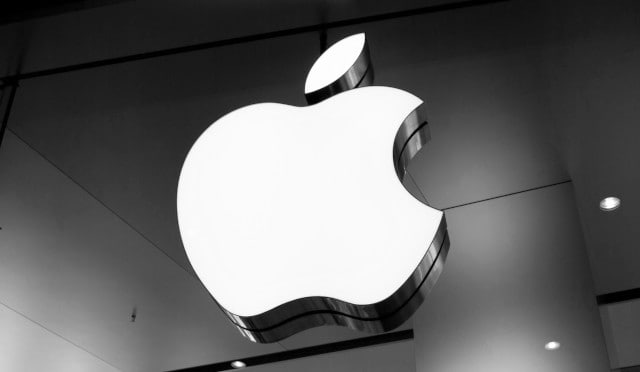Australia: Equities erode & Aussie falls after RBA stays the course
The Reserve Bank of Australia (RBA) surprised many in the market Tuesday with its decision to leave its cash rate unchanged, despite recent weakness in the country’s rate of inflation.
The RBA’s board elected at the conclusion to its latest monetary policy meeting to maintain its cash rate at 1.50%, where it has resided since July 2016.
RBA governor Philip Lowe noted that while the Australian labor market remains “strong,” there has been “little further progress” in reducing unemployment over the past six months.
Australia’s unemployment rate has been generally steady at around 5% over this period, and the central bank said it expects the level to remain consistent over the next year or so, before receding somewhat to 4.75% in 2021.
Meanwhile, lackluster consumer prices had spurred many market participants to think the RBA would cut its cash rate.
Australia’s Consumer Price Index (CPI) rose 1.3% year-on-year in the March quarter 2019, compared with a rise of 1.8% over the twelve months to the December quarter 2018. Overall, inflation was flat (0.0%) in Q1’19, compared with a rise of 0.5% in the prior three-month period.
Lowe highlighted that lower housing-related costs and “a range of policy decisions affecting administered prices” both contributed to this outcome. The RBA anticipates the pace of inflation to gradually accelerate to 1.75% in 2019, then 2% in 2020 and “a little higher after that.”
In response to the softer CPI figures, Australia’s local currency and public debt generally took downward turns.
Marc Chandler, chief market strategist at Bannockburn Global Forex, noted that the “market has not given up on a rate cut this year,” and that investors will likely “take their cues going forward from the labor market and price developments.”
Chandler observed that the Australian dollar (AUD) – “the strongest of the majors” – reached almost $0.7050 in its initial reaction to the RBA’s decision, however the gains had been pared, while a move back below $0.7000 would “embolden the bears.”
Chandler added that Australian yields also backed up following the RBA’s decision to leave rates unchanged.
The yield on 10-year Australian government debt was last up over 4.5% to 1.779%.
While bond prices fell, the RBA’s accommodative policy does not appear to have helped the country’s stocks continue their recent upward momentum.
Australian equities – as evidenced by the iShares MSCI Australia ETF (NYSEARCA: EWA), which has among its top holdings several financial sector firms such as CBA (OTCMKTS: CMWAY), Westpac Banking Corp (NYSE: WBK) Australia And New Zealand Banking (OTCMKTS: ANZBY) and National Australia Bank (OTCMKTS: NABZY) – fell more than 1.1% intraday Tuesday.
The ETF has climbed roughly 16.0% from its most recent 52-week low set December 24, 2018, eroding its recent gains from its more than 20.5% plunge in the second half of 2018.
Against this backdrop, investors will receive a host of updates on Australia’s economy, including business and consumer confidence, as well as critical employment data.
The week kicks off Monday with the National Australia’s Bank (NAB) Monthly Business Survey for April, after sentiment rose in the prior month.
Monday, May 13
- NAB Business Confidence (Apr)
Business conditions inched up to +7 index points in March from +4 in February, driven by increases in each of the index components, underscored by employment, which rose “well above average.” However, confidence fell 2pts in the month to 0 index points, continuing its below-average run.
According to NAB group chief economist Alan Oster, the uptick in business conditions was “a welcome development after the weakening trend over the past 6 months, though with forward indicators still looking weak” he said he will be “watching closely over the next few months to assess whether conditions in the business sector weaken further.”
Investors are then set to receive the Westpac-Melbourne Institute Index of Consumer Sentiment for May, following a “fairly muted” month-over-month rise in April, according to Westpac.
Tuesday, May 14
- The Westpac-Melbourne Institute Index of Consumer Sentiment (May)
Westpac chief economist Bill Evans noted that the April survey had captured consumer reactions to the Federal Budget, and although there was little change in consumers’ overall confidence from the prior month, he said the survey detail suggested the Budget was “well-received.”
However, Evans warned that the key issue will be “whether this boost from the Budget is sustained.
“Certainly the ‘pre-Budget’ print of 96.8 showed a further deterioration in sentiment from the previous print of 98.8, despite what was already quite a sharp 4.8% fall in March. Persistent weak wages growth; falling house prices; and the perceived rising cost of living are all weighing on consumers,” Evans added.
Elsewhere, by mid-week, the Australian Bureau of Statistics is set to release April’s employment figures.
Wednesday, May 15
- Employment Situation (Apr)
The RBA said after its monetary policy decision Tuesday that it recognized “there was still spare capacity in the economy and that a further improvement in the labor market was likely to be needed for inflation” to be consistent with its target.
The central bank added that given this assessment, its Board will be “paying close attention to developments in the labor market at its upcoming meetings.”
As such, employment data Wednesday will likely be scrutinized by investors somewhat more diligently than usual.
In March jobs increased by 20,700 to 12,790,000 persons, with full-time employment up 18,000. However, the number of unemployed rose 3,000 to 675,700.
Australians will also be lining up over the weekend to cast their votes in the country’s 2019 Federal Elections.
Saturday, May 18
- National Elections
Australia will be holding its elections to vote-in the nation’s 46th Parliament, with all 151 seats in its House of Representatives, and 40 of the 76 seats in its Senate up for grabs.
Second-term incumbent Prime Minister Scott Morrison is battling for a third three-year term against Labor opposition leader Bill Shorten.
Following the leadership shake-up in late August 2018, Morrison had replaced Liberal Party leader Malcolm Turnbull as PM.
Market participants will likely be paying close attention to the results of Australia’s elections, its employment data, and measures of confidence, as well as the unfolding of U.S.-China trade talks and other potential downside risks, for additional insights into the country’s general economic and financial well-being.
- Visit Interactive Brokers website
The analysis in this material is provided by Interactive Brokers for information only and is not and should not be construed as an offer to sell or the solicitation of an offer to buy any security. To the extent that this material discusses general market activity, industry or sector trends or other broad-based economic or political conditions, it should not be construed as research or investment advice. To the extent that it includes references to specific securities, commodities, currencies, or other instruments, those references do not constitute a recommendation by Interactive Brokers to buy, sell or hold such investments. This material does not and is not intended to take into account the particular financial conditions, investment objectives or requirements of individual customers. Before acting on this material, you should consider whether it is suitable for your particular circumstances and, as necessary, seek professional advice.















